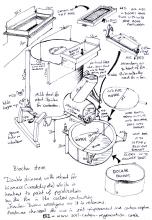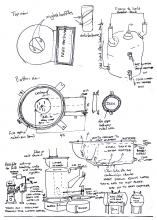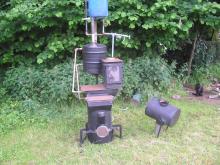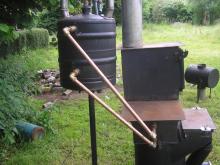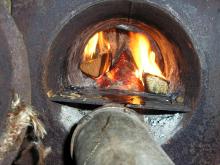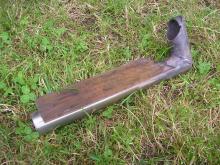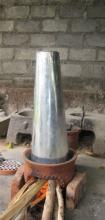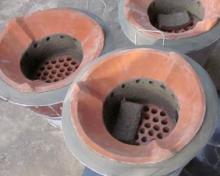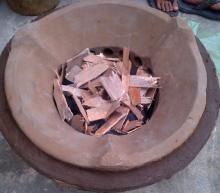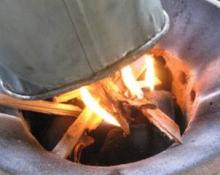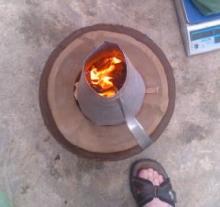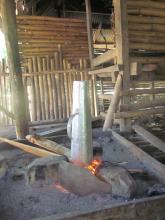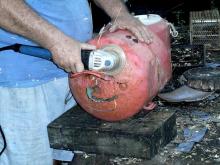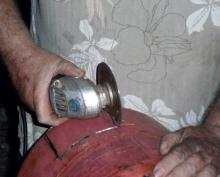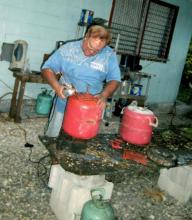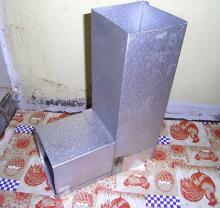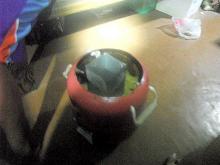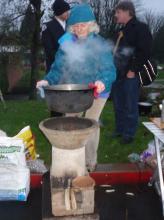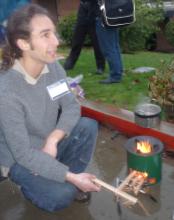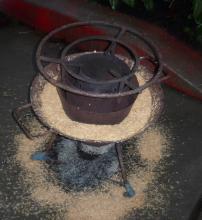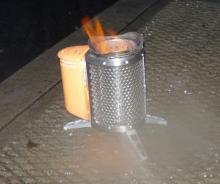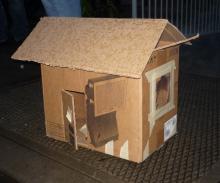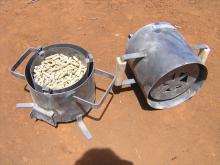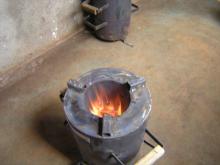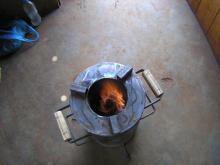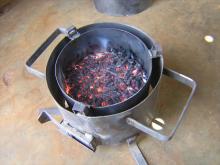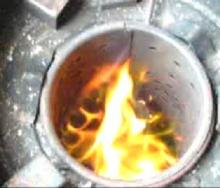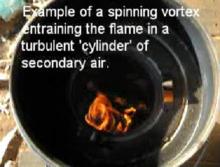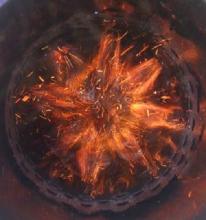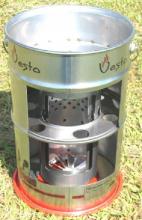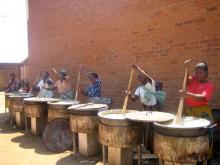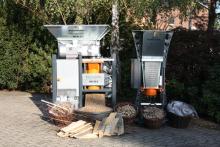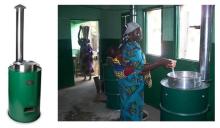Notes from Ed:
Hi sorry I havn't been following all of this thread, but I thought this might be of interest to somebody,
I am a market gardener, I produce a steady stream of biochar from my water heating systems. I live in Wales, it is cold and wet here and I like washing in hot water.
I have played with bringing tlud stoves indoors but it is not easy and so I have built water heating systems using what I call biochar rocket stoves (sorry if this brings back bad memories Crispin!)
Because they are not filled, lit and emptied from the top they can easily be left in place under heat exchangers, hot plates and a flue outlet pipe. Here in Wales this is important.
If you run them in the evening, when you most need space heat and cooking, then after a couple of hours you have your biochar. It is fine to keep them burning for as long as you want (whereas there is a limit to how much you can keep topping up a tlud)
Unlike wood burning stoves, it is possible to have the flue outlet angled up about 30 degrees from horizontal and surrounded in a thermal mass to capture residual heat. Otherwise the 8th photo is of a section of flue outlet with integral thermal mass.
Shut a door on the front and the biochar goes out overnight. My CO meter has yet to read 1ppm indoors. Empty the biochar by sliding out the floor of the stove and it drops straight into a metal bucket, no quenching, no dust and no mess.
The first photos are of these stoves connected to a 50 litre water tank + hotplate and oven for cooking. (The pipe in the second picture is to give secondary air to the flames.) The system in these photos is mobile and connected to a small header tank so that I can do demos at permaculture conventions and workshops.
The youtube video link below is of something different; a double walled flue pipe with feed and empty hoppers for putting in biomass and emptying out biochar. A bit like an anila stove except the inner combustion pipe has no floor, it goes straight through to the stove below. If its ok with Crispin, I was thinking of calling this flue pipe an anila flue pipe.

